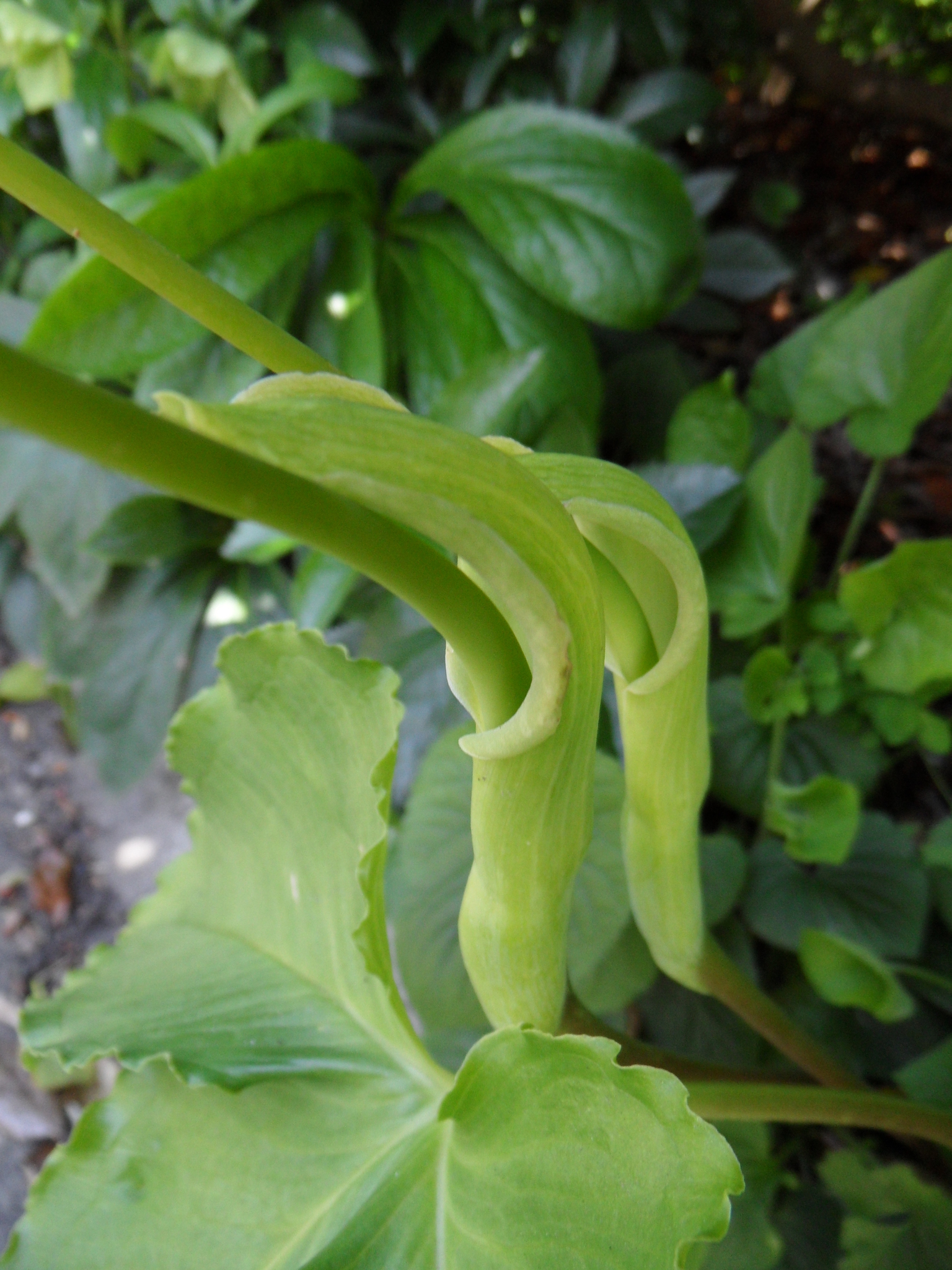
From the Greek Arum combined with aima – blood red, referring to the red-blotched leaves of some species.
Plants with flattened tubers or occasionally with rhizomes or stolons. Leaves solitary to several, compound, basal; stalks long, sheathing flower stalk as well. Spathe overlapping at base to conceal most of the spadix and often part or all of its appendix (tail-like tip). Spadix with a long appendix. Florets unisexual, without perianths. Male flowers above females when both sexes on same spadix. Stamens 1-5, united. Ovary 1-chambered with few ovules.
Grown for the attractive foliage and unusual hooded flowers.
About 170 species from Africa and Arabia, western N America, tropical and E Asia.
Tuber offsets or division of rhizomes.
A few species have local medicinal uses and the corms of some species are edible.
Leaves compound or deeply lobed; hooded spathes and spadix with prominent appendix; spadix unisexual, or male florets separated, or both.
Mayo (1982), Mayo & Gilbert (1986), Pradhan (1990), Gusman & Gusman (2002).
Source: (2005). Araceae. In: . Horticultural Flora of South-eastern Australia. Volume 5. Flowering plants. Monocotyledons. The identification of garden and cultivated plants. University of New South Wales Press.
